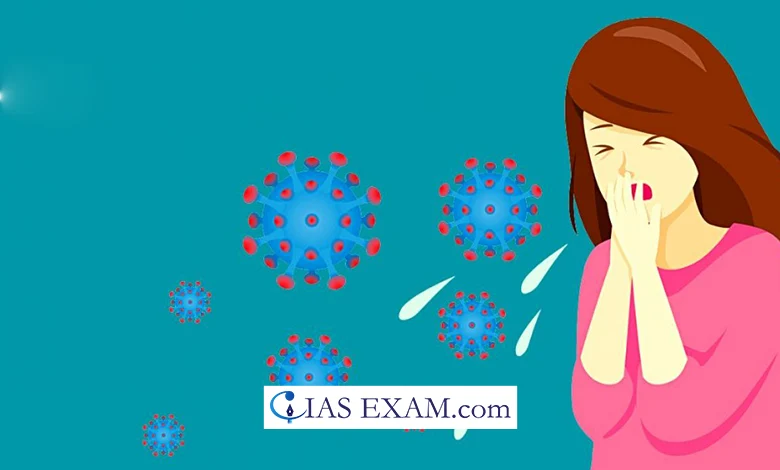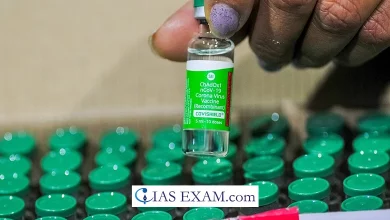WHO defines airborne transmission pathogens
Syllabus: Environment and Pollution[GS Paper-3], Health [GS Paper-2]

Context
The WHO has released a new report suggesting updated terms for pathogens that are transmitted through the air. This report, titled “Global technical consultation report on proposed terminology for pathogens that transmit through the air,” is the result of collaboration between the WHO, experts, and major public health agencies.
Importance of using updated terminology
- Addressing a Common Challenge:
-
-
- The comparison of the terms used to signify the transmission of pathogens through the air between the scientific disciplines has been the main drawback in this area.
- Language used at events like the Covid pandemic was different for both experts and slowed down communication that would have helped put out better response efforts.
-
- Enhancing Public Health Communication:
- Consistent terminology helps in clearer communication with the public about how pathogens spread through the air.
- It enables better understanding of preventive measures and strengthens public health messaging during outbreaks.
Key Terminology
- Individuals can transmit infectious respiratory particles known as Infectious Respiratory Particles (IRPs) through normal everyday activities like regular breathing, speaking, coughing, or sneezing, respectively.
- Unlike traditional air pollution, IRPs cover both solid particles as well as fluids of different sizes equally without allowing for discrimination between aerosols and particles of the size of drops.
- ‘Through the air transmission’ is a descriptor used for diseases spread through the air, with two sub-descriptors: Airborne Transmission or Inhalation, where IRPs are inhaled by others, or put directly on other people’s mouth, nose, and eyes through Direct Deposition may result in infection.
- For example, there is airflow, humidities and but also exciting ventilation like this that helps viruses come to longer distances.
Previous vs. New Terminologies
- Earlier Classifications:
- “Contact transmission” and “Droplet transmission” were recognized before the pandemic.
- “Airborne transmission” referred to diseases transmitted via smaller aerosols.
- New Definitions:
-
- All particles expelled from an infected person’s mouth or nose are now termed “infectious respiratory particles” (IRPs), regardless of size.
- The spectrum of IRP sizes is considered continuous, eliminating rigid distinctions between droplets and aerosols.
- The descriptor “through the air” characterises diseases primarily transmitted via IRPs suspended in the air.
Global Implications:
- Legal, Logistic, and Financial Considerations:
-
-
- The terminology shift can occur, as a consequence, to overarching legal, operational, and financial aspects of coverage strategies.
- Equity in the utilisation of resources and in accessing the prevention measures developed internationally is the new focal point encountered as the prevention is being rolled out globally.
-
- Unified Language for Interdisciplinary Collaboration:
-
- The term upgrading is important because it is now the common language for various expert disciplines among engineers, physicists, doctors, and epidemiologists.
- Thus, it is essential as it promotes an in-depth knowledge on the way the airborne dynamic transmits and it also helps in realising the way that the preventive means that are used like masks and respirators function.
Way Forward
- The global consultation marks the first step in addressing the challenges of airborne pathogen transmission.
- Future efforts will focus on further research and exploring implementation implications of the updated descriptors.
Conclusion
In conclusion, the introduction of updated terminology for airborne pathogen transmission by WHO and collaborating agencies signifies a significant milestone in public health. These terms provide a common language for scientists, policymakers, and the public, facilitating clearer communication and more effective response strategies during outbreaks. Moving forward, continued collaboration and research will be essential in harnessing the full potential of these updated descriptors to combat infectious diseases transmitted through the air.
Source: The Hindu
UPSC Mains Practice Question
Q.Discuss the implications of recognizing airborne transmission in the spread of infectious diseases, particularly in the context of public health strategies and preventive measures.





.png)



